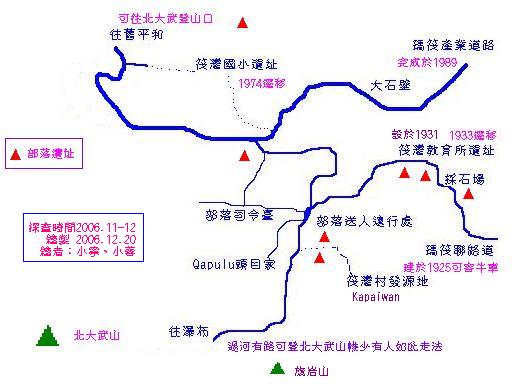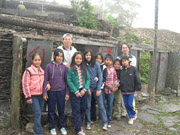Fawan Village, where we come from, is formed by three villages located between north-west of the main peak of North Dawu Mt. and two shores of upstream Ailiao South River.Fawan (Su-pauwan) sits at the left shore of the river, Tasilisi and Padain are located on the right shore of the river.From anywhere in Fawan Village the two other villages can be seen.Padain is hidden is the cradle beneath Chiyen Mt, while Tsalisi can be clearly seen on the sloped.The three villages form a triangle.Although at present the three villages fall under one administrative jurisdiction (Fawan Village) and form lanes, however aboriginal views regard these three villages as two independent and warring villages (Fawan, Padain) and one semi-independent sub-village (Tsalisi).

The home we speak of here refers to Fawan Village, i.e. The Lower Paiwan Village.Manchu records from 1722 showed there to be 12 communities and over 2000 people, and the site was Pingtung County Majoa Township Fawan Village.If the address is Pingtung County Majoa Township Paiwan Village then it refers to the Paiwan Village currently situated next to the mountain national route, which is the new location after the relocation in 1974.Fawan Village is situated deepest inside Majia Township.To enter the village two routes from across the river (Chiuhoucha & Tsalisi) can be taken, while another route extends from Old Pinghe, but they are only footpaths and the first route is especially treacherous.We are mainly formed by two villages, one being Fawan Village while the other is Kunshan Village of Kunshan Lane.In the past Kunshan Village formed the forward troops and led most battles to other villages.Presently the warzones can be reached by exiting Kunshan Village from a road off the Mafa agriculture road to the left, and although it has become farmlands stone markers are still in place.Due to its history few have entered to investigate.

In this Cyberfair the students visited the:
- Tucunu (Remnants of teaching institutions during Japanese Occupation and many slab houses).
- Tumalagan (Few slab houses and smaller in scale).
- Kalapayan (Remnants of spiritual stone pillar and slab houses).
- Masilid (Once cultivated for farming after the restoration in 1945, it has been abandoned and overgrown with weed)
- Liumar, Tusantaf, Balalan and Liwakao Villages.We now know that the Old Paiwan was formed by these four that was together called Taivavavaw.
Researched and recorded by: Hsiao-ning, Hsiao-rong, Hsiao-rou

Top |
